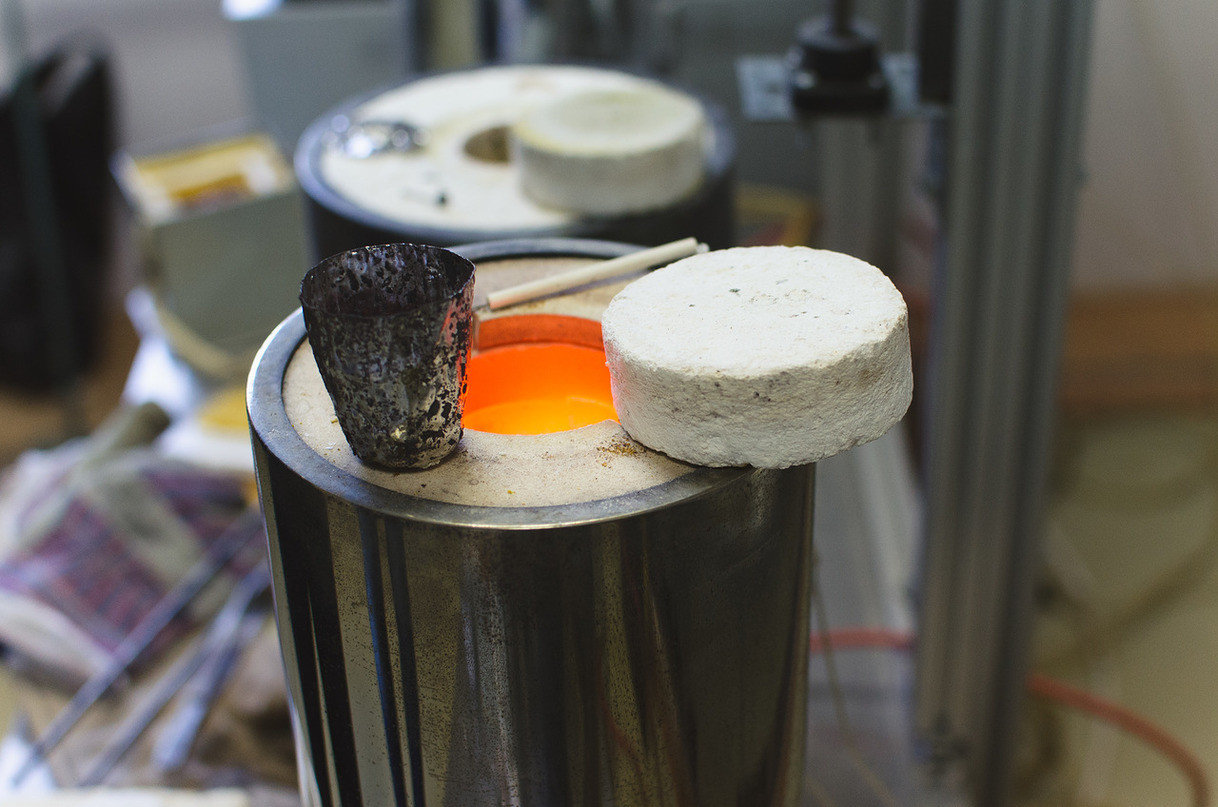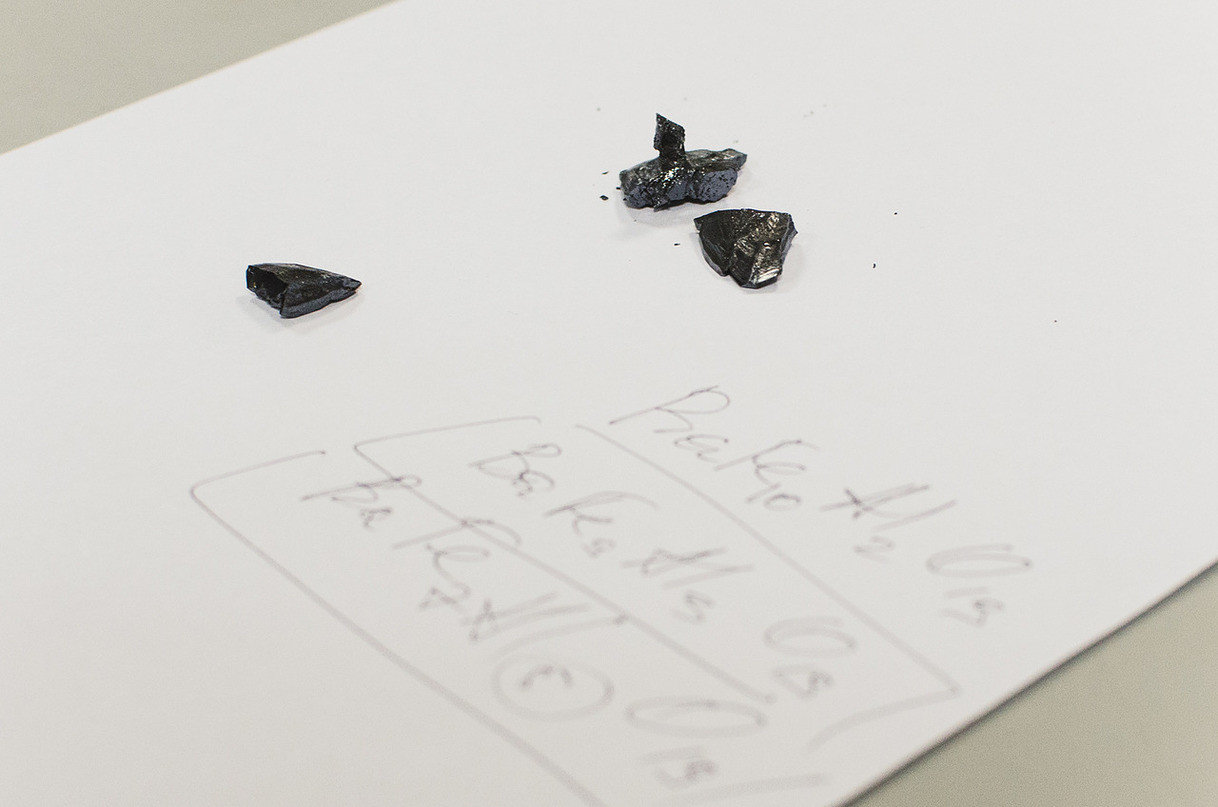A young scientist, the head of the Crystal Growth Laboratory, is working on a project to create single crystals based on barium hexaferrite. Unique material will be in demand in industry not only in our country, but all over the world. The scientist has already managed not only to develop theoretical methods, but also to create the material itself and to analyze its unique properties.
At the end of 2016 the results of the contest held in the framework of the “Young Science Support” activity under the Program for Competitiveness Enhancement were announced. The participants were scientists under the age of 35 years. An important feature of the competition was the involvement of external experts to evaluate the applications submitted. Results obtained as a part of project implementation within one year should be published in the leading scientific publications indexed in international citation databases such as Scopus and Web of Science (two main world systems that accumulate information about all significant scientific achievements).
62 applications were submitted to participate in the contest, among which 31 projects became the winners. According to the evaluation by external experts, the most points scored a project dedicated to obtaining new materials for electronics. The author of the project is PhD in Technical Sciences Denis Vinnik.
The project of the scientist is aimed at developing the physicochemical bases for single crystals production based on barium hexaferrite with properties optimized for the purposes of specific electronics devices.
.jpg)
A single crystal is a material in which the crystal lattice of the entire sample is continuous. A single crystal has minor defects concentration. Modern technology and industry need a wide range of properties of artificially grown crystals. In particular, the project of the scientist is aimed at creating a functional single-crystal material for microwave electronics with an operating frequency of up to 100 GHz.
“The creation of new crystalline structures based on barium hexaferrite with modified properties presents, on the one hand, a fundamental task of creating new materials and investigating their properties, and on the other hand, the results of this work have the potential for application in specific electronics devices. Using single crystals as a starting material of a certain chemical composition, unique devices can be created in which it is impossible to use more traditional materials. By a focused change at the atomic level of crystal’s structure, a radical change in the properties of the starting material is possible. The individual characteristics of the material will exponentially differ. Thus, by partial substitution of iron with aluminum, it is possible to create materials for devices of EHF electronics at frequency up to 100 GHz and higher, which is in demand, for example, in space communications. Partial substitution of iron with titanium leads to a decrease in the resonance frequencies, increases the absorption of the material, which makes it possible to use it to create radar-absorbent coatings.” – notes the young scientist.
A group of SUSU scientists carried out a number of works on the introduction of other atoms. Thus, checking various variants of modifying the structure and properties of single crystals. Scientists have investigated the effect of about 10 elements on the properties of the final material. The novelty lies in the study of the effect of partial substitution of iron atoms. In this case, the crystal lattice should not change its type.

Denis Vinnik noted that, at the moment this direction is the general trend of world science development, but most scientists are working on getting polycrystals – nano and micropowders of such materials. These techniques are less energy-and labor-consuming. However, single crystals are very interesting for the industry because of its ability to provide a high level quality of the final product; they also have a wide variety of use and minimum defects. Similar hexaferrite single-crystal structures with a significant degree of substitution of iron atoms were created only in SUSU.

“Our laboratory implements interdisciplinary approach to research. In our projects we conduct development of theoretical bases of obtaining single crystals technology, fulfill the growth of these materials on its base, comprehensive study of the structure and properties of materials to confirm the single crystals applicability in certain electronics devices and we strive to design devices based on our materials. For implementation of all these stages of the projects, we develop cooperation within SUSU, as well as external collaborations with world leading scientists in field of preparation and research of materials. As long as we can build partnership with such research centers, it can be argued that our single crystals honorably withstand tough competition in the world market of scientific research,” says Denis Aleksandrovich.

The international level of the results obtained indicates successful participation in competitions of the Russian Foundation for basic research, as well as the achievement of a high level of staff publications in journals included in the Top 10 and Топ 25 (Elsevier: Ceramics International, Alloys and compounds. American ceramic society: Crystal growth and design, Journal of physical chemistry, Journal of inorganic chemistry), and publications of MAIK – reports of the Academy of Sciences, series Physical chemistry and Physics.




